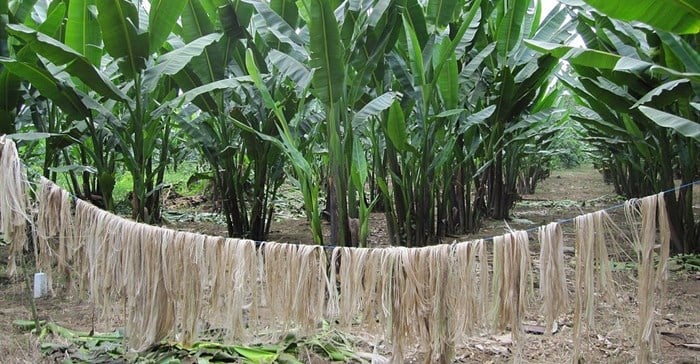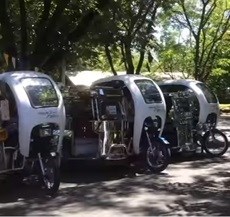Rickshaw gets upgrade with hemp sidecar

The Philippines is the world's major source of abaca fibre, also called Manila hemp, that is extracted from the leaf sheath around the trunk of the abaca plant (Musa textilis), which is indigenous to the Philippines. The locally-sourced abaca fibre composites reduce the weight of automotive parts by about 60%, according to scientists at the Department of Science and Technology-Industrial Technology Development Institute (DOST-ITDI) which collaborated with the Korea Institute of Materials Science (KIMS) to develop the project.
The lower density saves on nearly half the energy consumed by conventional tricycles made of GI sheets and metal, says DOST-ITDI lead researcher Marissa Paglicawan. The abaca composite also absorbs impact much better than metals, adds KIMS director Byung-Sun Kim. "Right now most interior of more than 80% of cars worldwide are made of natural fibre composites." Mercedes-Benz uses abaca fibre-reinforced polypropylene composites in automobile body parts and Daimler Chrysler uses abaca composites to insulate the floors of passenger cars,
Motorised and pedal-powered tricycles are a common means of public transportation in the Philippines. They are similar to the three-wheeled taxis in Thailand called tuk-tuks and the auto rickshaws of India. The more ubiquitous motorised trike is powered by a motorcycle affixed with a sidecar designed to carry about two to three passengers. It is common, however, to see tricycles overloaded with as many people and goods as it can carry.
Room for improvement

The abaca tricycle's sidecar has been redesigned to have a taller headroom by eight inches and its entrance wider by six inches compared to conventional trikes. But the design is still too small, as even new DOST secretary Fortunato de la Peña admits: "I can't seem to fit into the tricycle cab."
In addition, Karl Vergel, head of the transport and environment group of the University of the Philippines National Center for Transportation Studies (NCTS), raises safety concerns. "Its strength needs to be tested," Vergel says, although he notes, "the problem is, even conventional tricycles have not been tested for safety ever".
The safety standards, says his NCTS colleague, Ernesto Abaya, are based on the "bicycle principle of go slow": "At a maximum of 30 kilometres per hour, the impact would not be so serious." Because of passenger safety issues, field testing of the abaca composite tricycle will start with the tricycle roof then the passenger part, says Blessie Basilia, chief of DOST-ITDI's materials science division.
View the sidecar upgrade and original article on SciDev.Net.